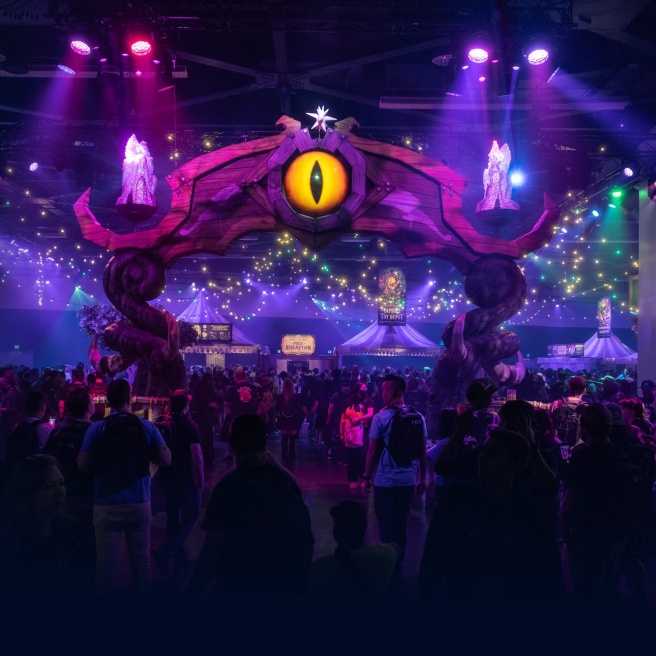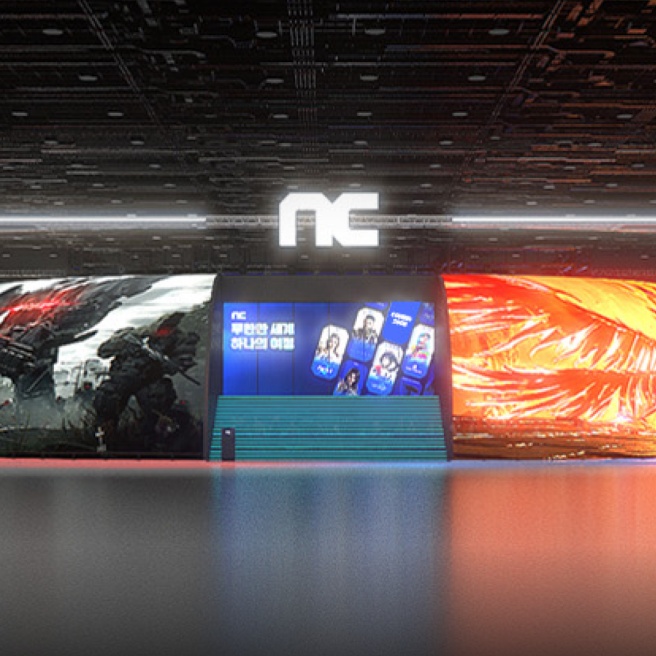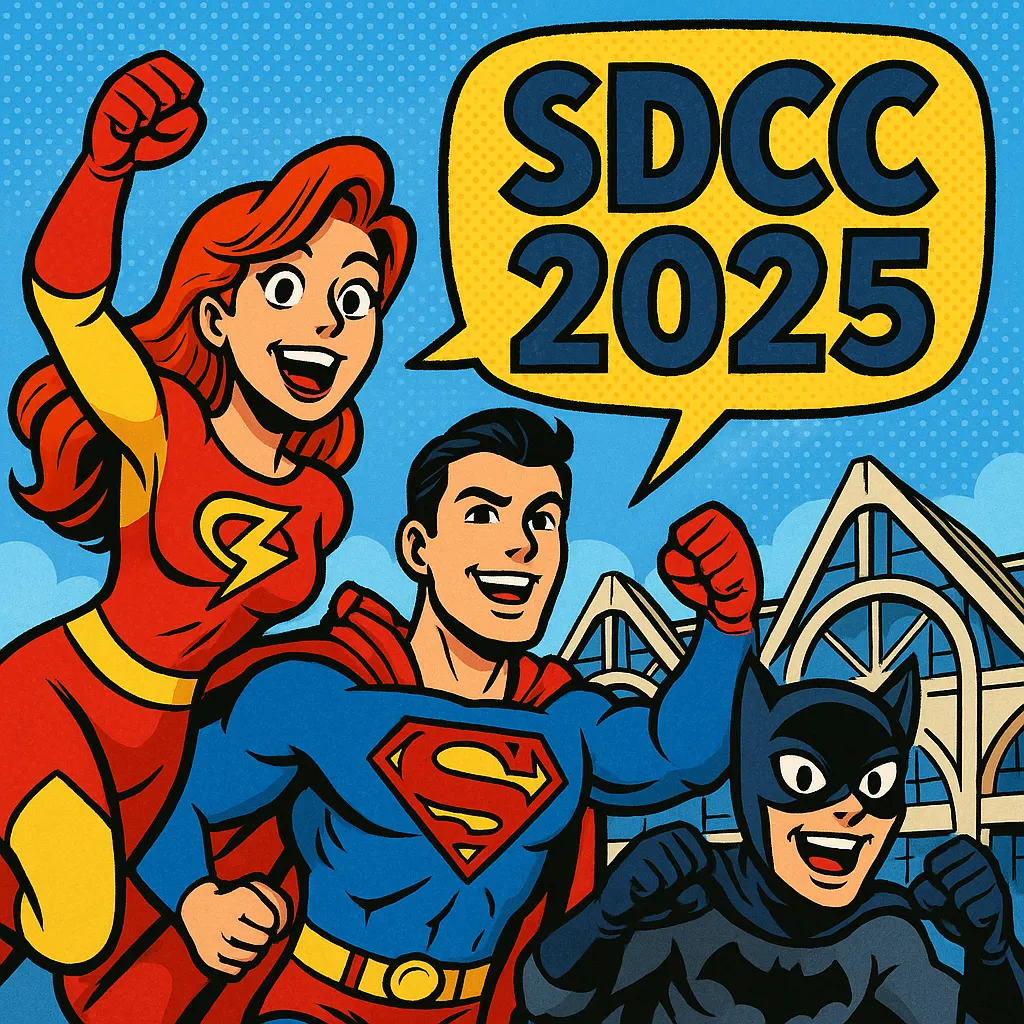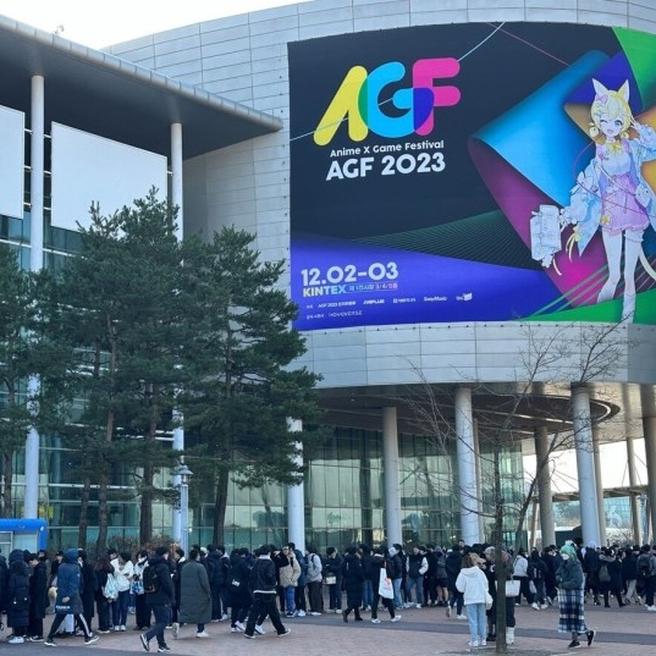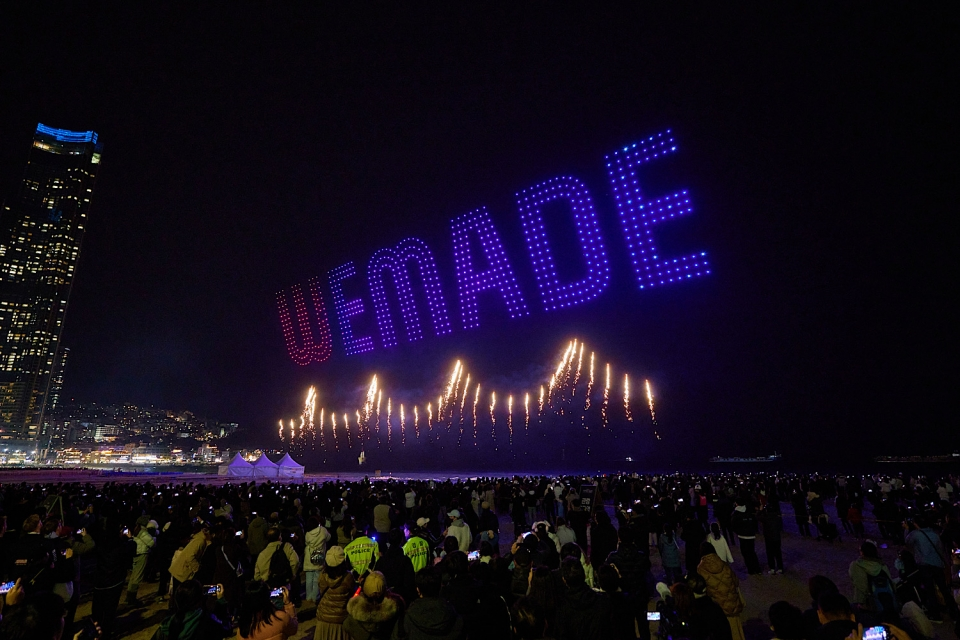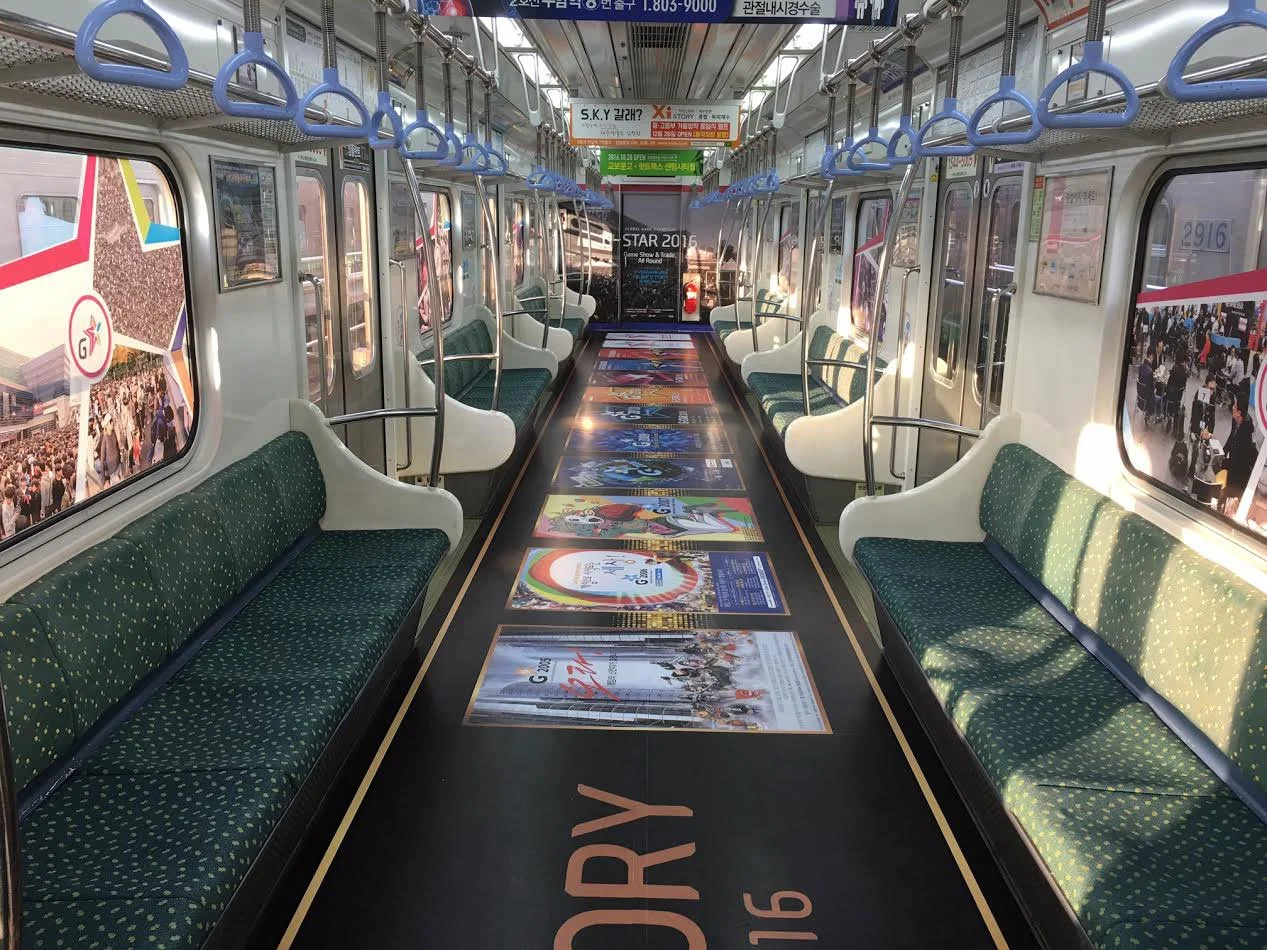
THANK YOU FOR YOUR REQUEST
Thank you very much for your interest in EIDETIC MARKETING.
We look forward to working with you.
We will contact you soon.Thanks Again.

THERE WAS A PROBLEM WITH YOUR SUBMISSION.
Have you checked all the required fields?
We want you to write your Company, Name, E-mail, Budget, Country to Execute, Website URL, Wanted Services and Project Description.Thanks.
Monthly Archives: June 2025
How to Write an RFP for G-STAR Booth Design & Production
June 27, 2025
How to Write an RFP for G-STAR Booth Design & Production
What to Include in Your G-STAR Booth Proposal
A great proposal starts with a great RFP. At G-STAR, your booth should go beyond attractive design—it should reflect your brand identity and immerse visitors in your IP. Your RFP (Request for Proposal) becomes the foundation for turning those ideas into reality.
Whether your goal is viral social content, high visitor engagement, or a bold brand statement, a well-crafted RFP helps your agency align with your vision and deliver an exceptional result.
Here’s how to structure your G-STAR RFP for clarity, efficiency, and impact:

Essential Elements of a G-STAR RFP
1. Project Overview
Provide essential background and goals to guide strategy and creative planning.
- • Event Name, Date, and Venue
(e.g. G-STAR 2025, Nov 13–16, BEXCO, Busan) - • Participating Game/IP and Unique Selling Points (USPs)
(e.g. cross-platform gameplay, global fanbase, new launch) - • Target Audience or Region
(China-only, Asia-wide, global) - • Exhibition Goals & KPIs
(brand awareness, media impressions, foot traffic, demo play count)
2. Booth & Experience Design
Outline the physical layout and overall visitor experience of your booth.
- • Zone and Booth Info
BTC / BTB / Outdoor, assigned booth number, floor plan (if available) - • Booth Dimensions and Flow
Booth size (width × depth).
(If you have any specific entry points, nearby anchors, or visitor flow insights, feel free to include them.) - • Core Booth Elements
Main stage, LED screen, demo zones (PC/mobile/console), merch zone, photo zone, info desk, storage, queue setup, etc. - • Quantity & Specifications for Each Element
(e.g. 10 PC demo units, 3 LED walls, 2 photo zones) - • Design Direction
Desired theme, visual tone, concept keywords, and brand references (color palette, typography, etc.) - • IP Prioritization
Space allocation or messaging focus by title or content category
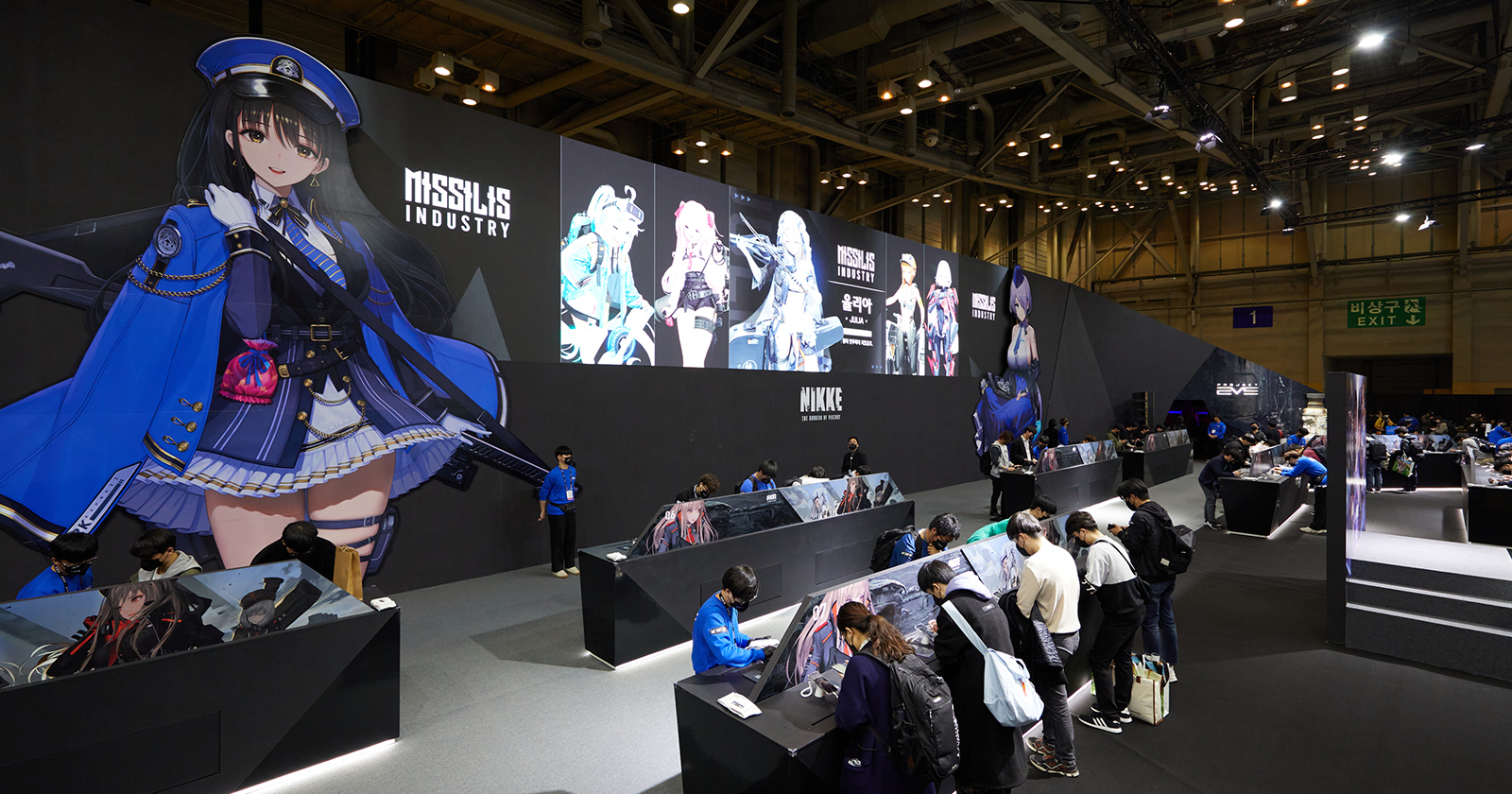
3. Content & On-Site Operations
Define what needs to be created, who will support the event, and how interactions will happen.
- • Multimedia Requirements
Trailers, teaser videos, gameplay loops, branded motion graphics - • Merchandise
Items to be produced and displayed - • Gamified or Interactive Experiences
Stamp rallies, quizzes, mini-games, missions - • Staffing Needs
Cosplay models, MCs, operational staff - • Language Requirements
(e.g. English, Spanish, Japanese support for international visitors)
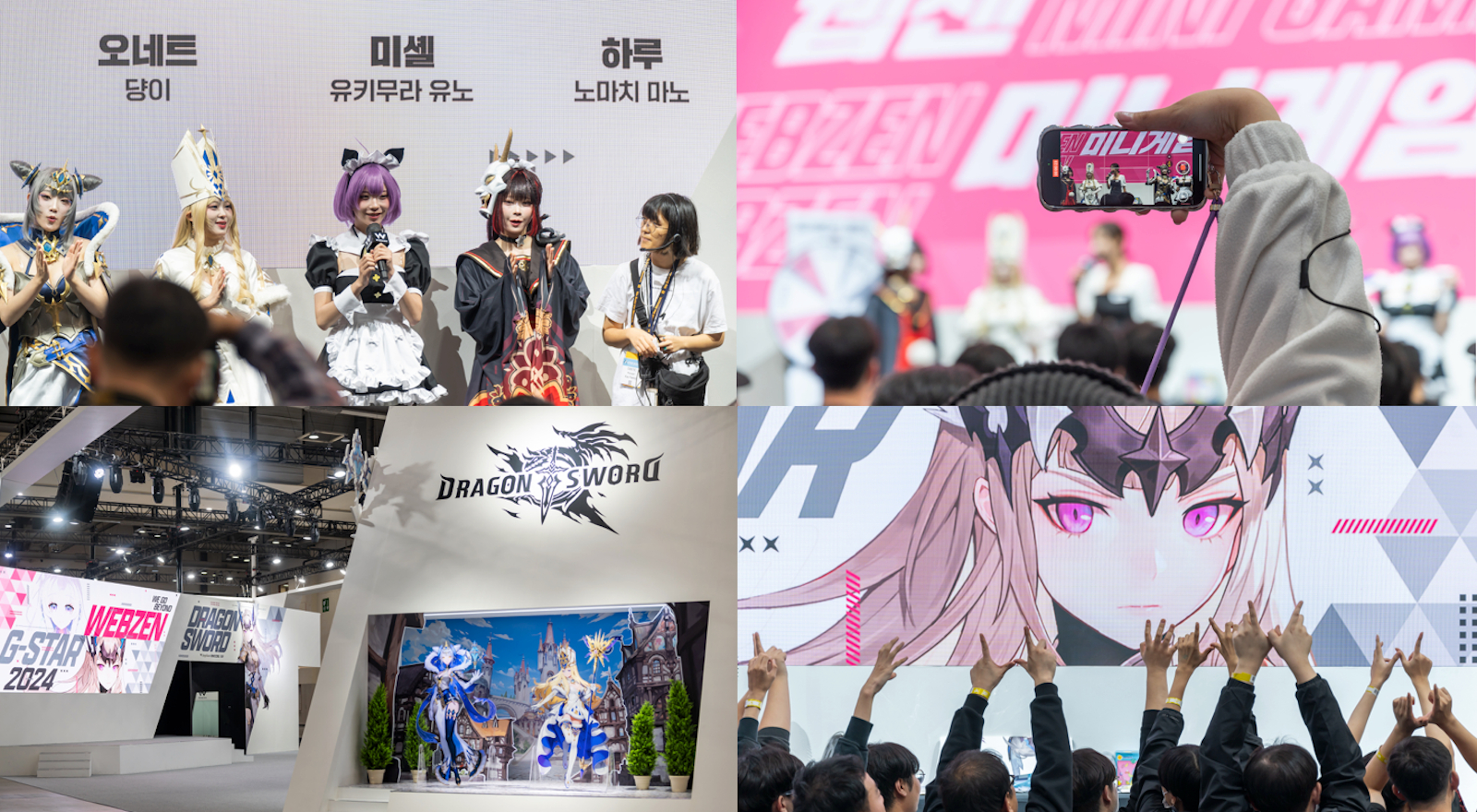
4. Budget, Timeline & Submission
Help your agency align feasibility with creativity from the start.
- • Total Budget Range
Specify whether VAT is included and whether flexibility exists - • Proposal Timeline
Submission deadline, result announcement, contract date, production kickoff - • Required Submission Materials
Proposal, company profile, exhibition portfolio (G-STAR experience preferred), staffing plan, itemized estimate - • File Format & Method
PDF via email, file transfer platform, or shared drive link - • Evaluation Criteria
Creativity, brand fit, feasibility, industry experience, and cost transparency
(Include scoring breakdown if available)
Include your logo, gameplay footage, and key visual assets to help agencies create more customized and creative proposals. The more detailed your RFP, the more powerful the results.
※ If you require an NDA, be sure to request it early and allow time for mutual review and signing.
Set Your G-STAR RFP Up for Success
A strong RFP sets the tone for everything that follows—from creative ideas to final execution. When your goals, priorities, and materials are clearly defined, your agency can respond with sharper strategies and more compelling proposals.
Over the past few years, we’ve brought ideas to life on the G-STAR show floor—whether it was Webzen’s standout 2024 booth, EA Sports’ immersive setup in 2023, Flint’s subculture-inspired space in 2022, or SHIFTUP’s Nikke debut in 2021.
If you’re planning your next G-STAR activation, make your RFP the first step toward a booth that turns heads and delivers on your goals.
Where is the best booth location at G-STAR Gameshow?
June 21, 2025
Where is the best booth location at G-STAR Gameshow?
Booth Strategy Q&A for B2C and Offsite Activations
On November 13, G-STAR Korea will once again take over BEXCO in Busan, drawing in over a thousand game companies and tens of thousands of fans. In 2024, the event hosted 1,375 exhibitors and 3,359 booths, making it the largest game convention in Korea. With so many participants, securing a strategic booth location isn’t just helpful—it’s essential for success.
Let’s break down everything you need to know about booth designation, outdoor activation rules, and how to stand out in the crowd.
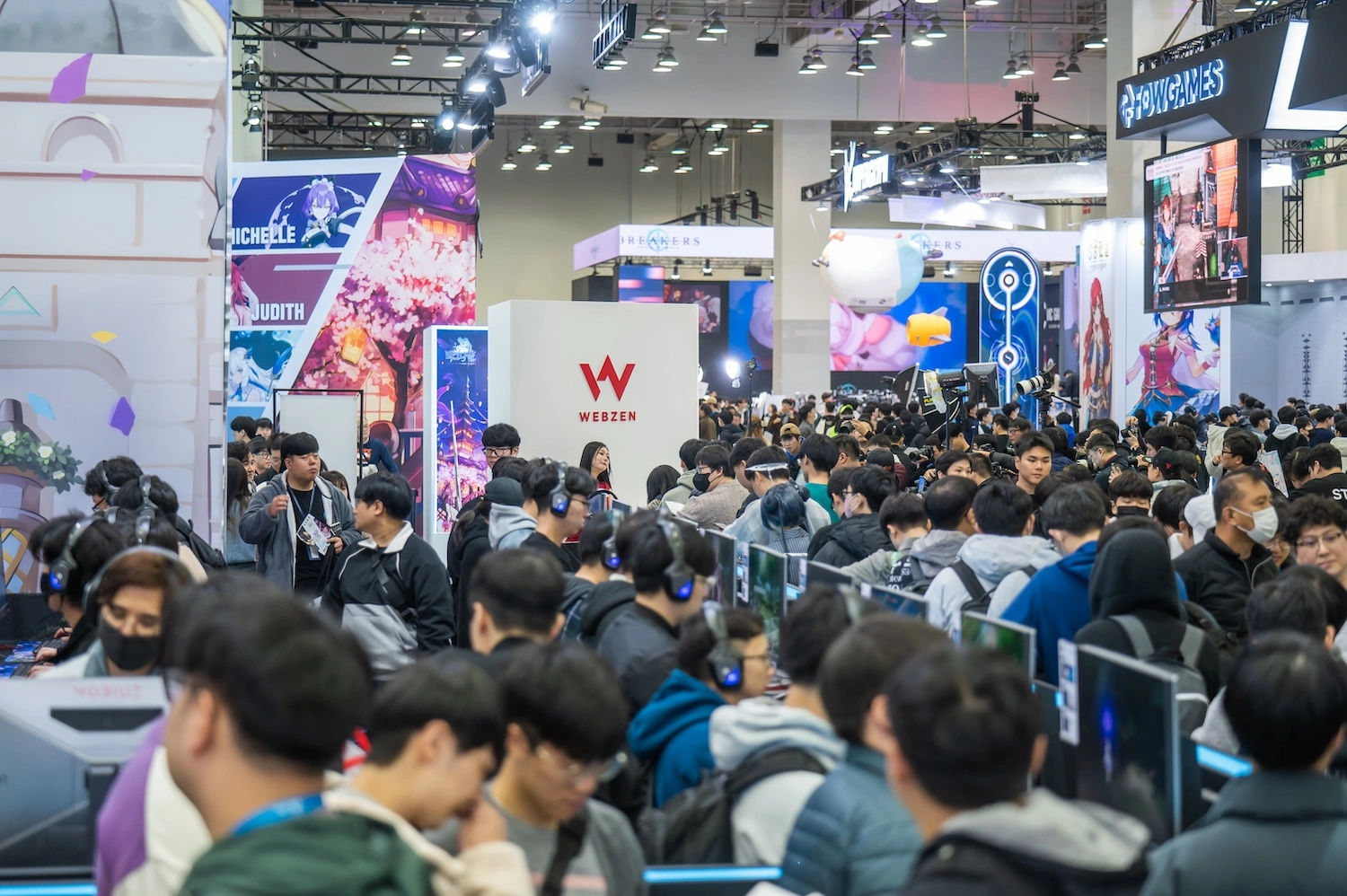
G-STAR Booth Strategy Q&A
G-STAR booth designation is based on application period, booth size, past participation, and compliance history. Priority is given in the following order:
1. Super Early Bird Exhibitors (Large-scale participants)
– Companies applying for 200+ booths: Priority selection within designated zones (BTC North, East, West)
– Companies applying for 40+ BTC and 40+ BTB booths: Booth selection via lottery within the finalized layout
2. Early Applicants
– Companies applying for 40+ BTC or 20+ BTB booths: Assigned after super early bird placement, with possible location coordination
3. General & Small-scale Exhibitors
– Booths assigned by organizers based on layout
To maximize your visibility, it’s crucial to confirm participation early, secure a booth location, prepare your RFP, and select a capable agency partner.
Most attendees enter through the central gate of BEXCO Exhibition Hall 1, which immediately exposes them to zones D02 and D03. These areas are prime real estate.
In high-traffic events like G-STAR, booth designation directly impacts performance. A centrally located booth maximizes visibility, encourages hands-on engagement, and drives social media buzz.
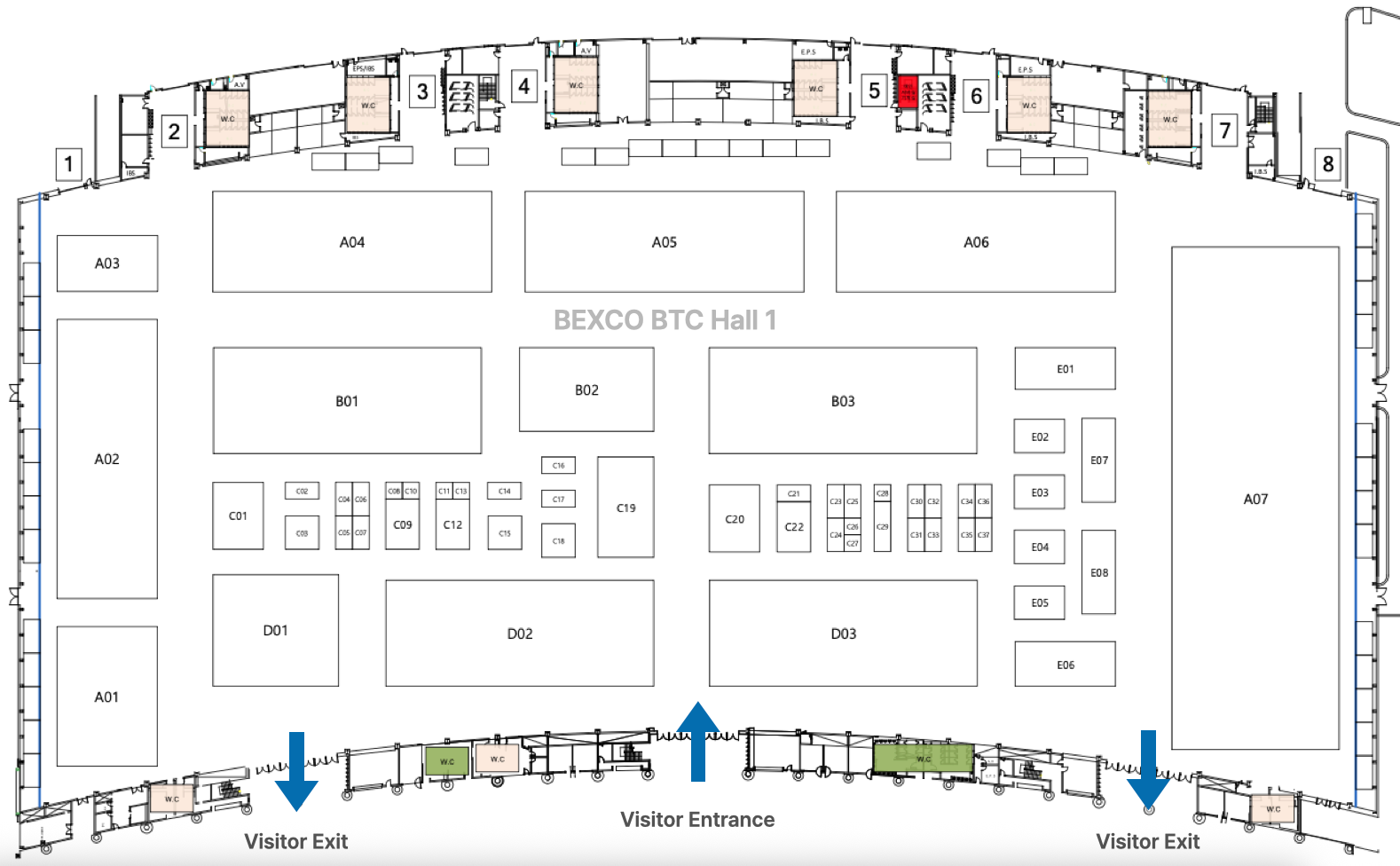
Webzen stole the spotlight in 2024 with its D03 booth. Facing the main entrance, its multi-dimensional structure featured an immersive LED display showcasing their new title TERBIS. With cosplayers and a photo zone, the booth was designed to maximize both in-person engagement and online shares. The media praised its layout and content execution as a best-case example.
👉View Webzen’s G-STAR Portfolio
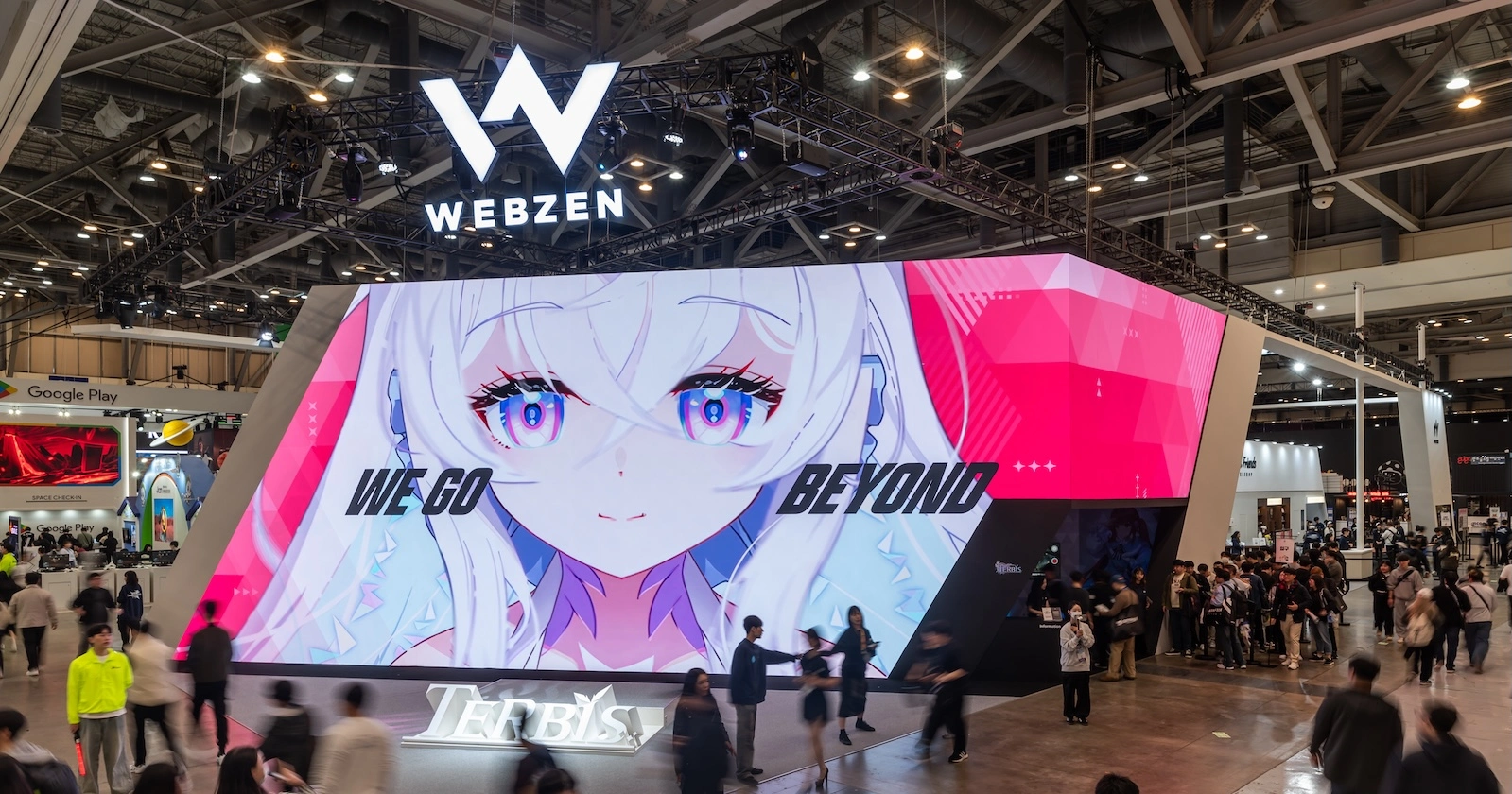
G-STAR Outdoor Booth Q&A
Outdoor booths are open to any exhibitor, regardless of BTC/BTB participation. All outdoor participants automatically receive sponsor status.
Outdoor Booth Details
- • Booth Size: 9m x 9m
- • Price: KRW 25 million (approx. $18,300, excluding VAT) per booth
- • Non-exhibitors: +50% surcharge

Outdoor booth rules differ significantly from indoor ones. Be sure to comply with these:
• Max height: 6m
• No 2-story structures (except for display-only upper containers)
• All elements must fit within the total space you’ve applied for.
• Video displays must face the main entrance of BEXCO.
Due to exposure, logistics, and structural regulations, it’s essential to work with an experienced partner.
Get Expert Help from Eidetic
From strategy to execution, we have deep expertise in managing indoor and outdoor booths at G-STAR. As one of the best marketing agencies in Korea, we deliver immersive, high-impact experiences that align with your marketing goals.
Up next: A step-by-step RFP guide for G-STAR exhibitors
G-Star Outdoor Advertising & Event Marketing Across Busan
June 12, 2025
G-Star Outdoor Advertising & Event Marketing Across Busan
During the G-Star Korea season, the excitement isn’t limited to BEXCO. Across Busan’s most popular hotspots—like Haeundae, Gwangalli, and Busan Station. G-Star outdoor advertising has become a key strategy for brands looking to stand out during Korea’s biggest game convention. From bold banners to immersive pop-up events, companies are taking their campaigns beyond BEXCO and into the heart of Busan.
In this article, we’ll explore how brands leverage outdoor spaces in Busan to drive visibility and engagement beyond the exhibition hall.
Before diving into specific case studies, let’s first take a look at the key hotspots around Busan where brands can create maximum impact.
Outdoor Spots in Busan for G-Star Outdoor Advertising
Some of the most impactful brand moments happen where the crowds naturally gather. These locations have proven to be prime zones for G-Star-related outdoor events and activations:
1. Busan Station
As one of the city’s busiest transportation hubs, Busan Station sees a massive influx of visitors arriving by KTX and regional trains—especially during G-Star week. It’s the perfect location for large-format OOH campaigns, station dominations, and welcome visuals that make a first impression as soon as attendees step off the train.
2. Haeundae Beach
A major tourist destination all year round, Haeundae transforms into a festival zone during G-Star. The beach and nearby plaza areas draw both locals and visitors, especially in the evening. It’s ideal for nighttime activations like drone shows, open-air events, or lifestyle branding experiences that connect gaming with pop culture.

3. Gwangalli Beach
Known for its scenic ocean view and the iconic Gwangan Bridge, this beach attracts a younger crowd looking for social hangout spots. The beachfront road and wide pedestrian areas make it suitable for interactive booths, experience zones, and social-media-friendly installations.

4. Centum City
Located near BEXCO, Centum City includes one of the largest shopping malls in Korea (Shinsegae) and is a popular stop for G-Star attendees. With heavy foot traffic from both gamers and everyday shoppers, this area is perfect for spillover marketing, hybrid online-offline campaigns, and walk-through activations.
Next, let’s take a look at how some brands used these spots for outdoor ads and events during G-Star. Here are a few examples of how brands have promoted themselves at these locations.
Drone Show
As the main sponsor of G-Star 2023, Wemade took outdoor marketing to the next level by organizing a massive drone show over Haeundae Beach. This spectacle wasn’t just for entertainment—it was a bold promotional move for their upcoming game titles and blockchain platform, WEMIX. With synchronized drones forming symbols, characters, and brand visuals in the night sky, Wemade effectively captured public attention beyond the exhibition hall and reinforced its identity as a forward-thinking tech brand.
Watch the full drone show from Wemade Festive Night → Youtube
Metro Branding
To extend the reach of G-Star branding throughout the city, the Busan Information Industry Promotion Agency launched a G-Star themed metro train. This train wrapped in promotional visuals connected Centum City with central transit hubs, drawing the attention of commuters and tourists alike.
OOH Advertising Plan in Busan
During G-Star season, OOH advertising becomes a powerful tool to capture attention even before attendees reach the show floor. With strategic placements in high-traffic areas, brands can maximize exposure to both local residents and inbound visitors.
Key OOH zones for G-Star:
- • Busan Station area: As the main arrival point for many out-of-town visitors, this area is ideal for large billboards, digital signage, and wall wraps. Ads here create an early and lasting impression.
- • Bus stops around Haeundae Beach and other major tourist zones: These are perfect for street-level posters, shelter ads, and side panels that target casual pedestrians and beachgoers.
- • Near BEXCO and Centum City: Surrounding the exhibition center, this area allows brands to reinforce messaging through lamp post banners, transit ads, and large-scale banners—reaching attendees on their way to the venue.
These OOH touchpoints help build anticipation, reinforce brand presence, and guide foot traffic toward key activations.

Experiential Setups & Photo Spots
Epic Games attracted attention with a life-sized “Battle Bus” installation at Haeundae Beach and large-scale branded banners. The immersive setup served as both a fan engagement point and a visual anchor for outdoor media coverage.
Outdoor Marketing: More Than Just Hype
Outdoor activations extend the visitor experience far beyond the show floor. They amplify awareness, drive foot traffic, and offer fans more accessible ways to engage with brands, even without a show badge. In Busan’s open-air settings, brands can go bigger, louder, and more unexpected—turning the whole city into a stage.
Planning an Outdoor Advertising Campaign?
We specialize in full-service event execution, from exhibition booths to city-wide brand experiences. Whether you’re planning a drone show, a scenic installation, or a themed train campaign, our team ensures creative consistency and flawless delivery.
🔗 See our content: G-Star Outdoor Booth Regulations
📹 Watch our Youtube: G-Star EA Sports
Gemini vs. ChatGPT: Who’s Leading the AI Race?
June 6, 2025
Gemini vs. ChatGPT: Who’s Leading the AI Race?
AI Trends Explored Through Google I/O 2025
When we first published our article on AI in early 2024, AI was rapidly transforming the design landscape—unlocking new tools, workflows, and creative possibilities. Since then, it hasn’t just evolved—it has expanded in every direction.
Fast forward to 2025, and AI is no longer an external force designers adopt. It’s becoming a native layer in everything from visual generation and product design to search, software, and even hardware. That shift was on full display at Google I/O 2025 Keynote, where Google introduced major advancements in its Gemini ecosystem—signaling a direct challenge to OpenAI’s dominance with ChatGPT.
So where do the two leading AI platforms stand today? Let’s take a closer look at Gemini vs. ChatGPT.
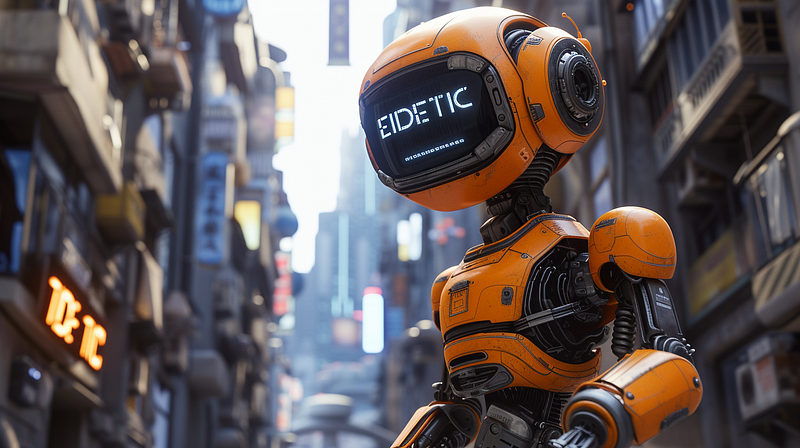
Key Announcements at Google I/O 2025
1. AI Model Gemini 2.5 Pro & Flash Updates
Google announced continuous improvements to its core Gemini models, emphasizing efficiency and advanced reasoning.
Gemini 2.5 Pro received an “experimental enhanced reasoning mode” called Deep Think, utilizing parallel thinking techniques for highly complex tasks like math and coding. This aims to improve the model’s ability to consider multiple hypotheses before responding, a crucial aspect for tackling intricate problems. Gemini 2.5 Flash also received updates for stronger performance in coding and complex reasoning, optimized for speed and efficiency.
Veo & Imagen 3
Google showcased advancements in its generative media models. While specific versions like “Veo 3” and “Imagen 4” were mentioned as powering tools and experiences, the overall focus was on enabling more creative control and high-quality generation of video and images. A new AI filmmaking tool called Flow, built with and for creatives using Google DeepMind’s models, was introduced, allowing for cinematic film creation with control over characters, scenes, and styles.
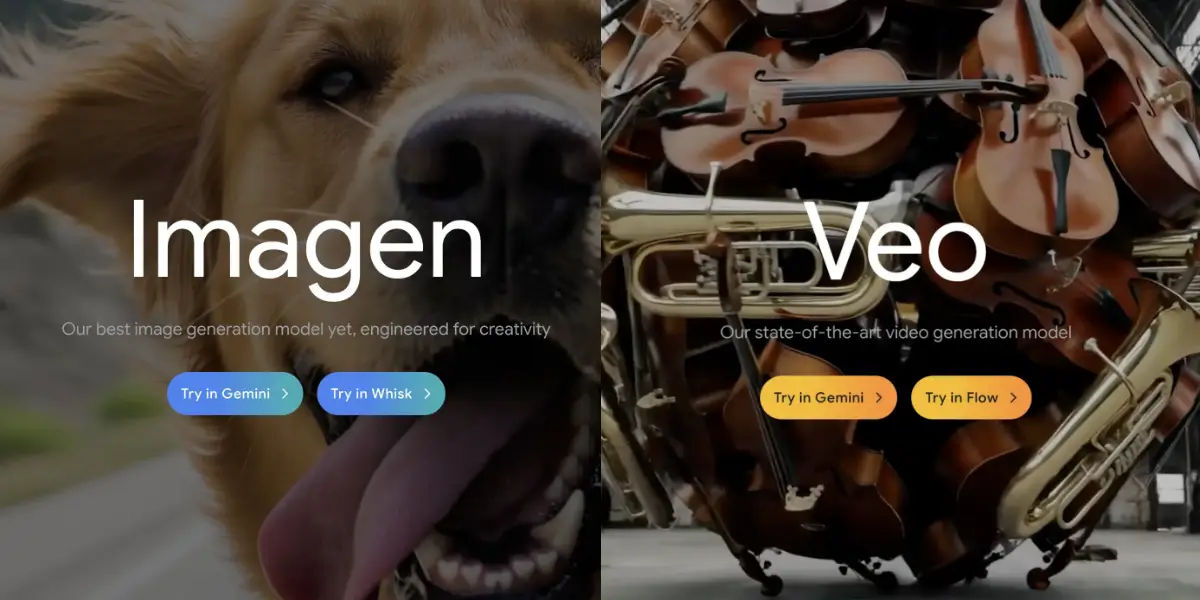
2. Agentic AI & Project Astra
The concept of AI agents, capable of proactive assistance and multi-step tasks, was a central theme.
Project Astra
This ambitious long-term project was publicly demonstrated, showing a “universal AI assistant” capable of perceiving and understanding the world through live camera and screen-sharing, reasoning across modalities, and having fluid, conversational interactions. The AI demonstrated memory of past interactions and observations, moving towards a truly intelligent and assistive agent. Gemini Live now incorporates Project Astra’s camera and screen-sharing capabilities.
Google is also bringing agentic capabilities to Chrome, Search, and the Gemini app, with a new Agent Mode in Gemini designed to help users get more done by understanding intent and executing complex tasks.
3. Search AI Mode & AI Shopping
Google’s flagship product, Search, is being fundamentally reshaped by AI.
AI Mode
Now available to all U.S. users, AI Mode (formerly AI Overviews) provides AI-generated summaries directly in search results. It combines information from multiple sources to deliver clear, concise answers, and has already led to a 10% increase in usage for relevant queries.
Deep Search
For more complex, research-heavy queries, Deep Search offers richer, more in-depth responses. It’s currently being tested in Labs as part of AI Mode’s ongoing development.
AI Shopping
Google is enhancing the shopping experience with interactive product panels, personalized recommendations, and an “agentic checkout” feature that tracks prices and notifies users when they drop.
4. AI Devices: Google Glass, Google Beam, and Android XR
Google’s vision for AI extends to hardware, with new integrations and platforms.
Android XR & Google Glass
While a specific new Google Glass device wasn’t a standalone announcement, Android XR was a significant focus. This platform aims to bring spatial computing and immersive experiences to devices. New eyewear partners like Gentle Monster and Warby Parker will build glasses with Android XR, indicating a move towards smart glasses that leverage Android and, by extension, Gemini’s capabilities for real-time information overlay and augmented reality.

Real-time Translation
The advancements in multimodal AI and Project Astra’s ability to understand the environment and provide real-time information strongly imply enhanced real-time translation capabilities, though a dedicated “real-time interpreter” device announcement was not the primary focus.
Google Beam
This was demonstrated as a new state-of-the-art video model that transforms 2D video streams into a realistic 3D experience using an array of six cameras and AI, rendering users on a 3D lightfield display. While not a consumer device per se, it showcases Google’s advanced research into immersive AI experiences.

Gemini vs. ChatGPT: A Quick Look
ChatGPT excels in creative writing, natural conversation, and coding assistance. Many users rely on it to draft emails, write stories, debug code, and explain complex topics in a conversational tone.
On the other hand, Gemini shines when it comes to working within the Google ecosystem. It integrates naturally with tools like Gmail, Docs, Drive, and Calendar, making it a convenient assistant for users who already rely on Google’s productivity apps. From summarizing emails to drafting documents or helping organize schedules, Gemini is designed to work where many people already do.
If you’re looking for a tool that helps with creative content and programming tasks, ChatGPT is likely the better fit. But if your workflow depends heavily on the Google ecosystem and you need live access to current information, Gemini may serve you better.
Gemini vs. ChatGPT Pricing
Here’s a simplified breakdown of Gemini and ChatGPT pricing tiers.
| Google Gemini | OpneAI ChatGPT |
|---|---|
| Free Plan: $0/month | Free Plan: $0/month |
| • Gemini 2.5 Flash • Limited access to 2.5 Pro • Image generation (Imagen 4) • Gemini Live, Canvas, Gems, NotebookLM (basic) • 15GB storage | • GPT-4.1 mini (limited) • Limited access to GPT-4o, OpenAI o4-mini, and deep research • Limited file upload, image generation, and voice mode • Create/use custom GPTs |
| Google AI Pro: $19.99/month | ChatGPT Plus: $20/month |
| • Full access to Gemini 2.5 Pro + Deep Research • Veo 3 video generation (trial) • Flow (AI filmmaking tool) • 2TB storage + Gemini in Gmail, Docs, Chrome • Free for students | • GPT-4.5 research preview + GPT-4.1 optimized for code • Standard + advanced voice mode (incl. video/screensharing) • Create projects, tasks, use custom GPTs |
| Google AI Ultra: $249.99/month | ChatGPT Pro: $200/month |
| • Highest limits for 2.5 Pro Deep Think & Veo 3 video gen • Access to Project Mariner (agentic research) • YouTube Premium individual plan included • 30TB storage (Drive, Photos, Gmail) | • Unlimited access to GPT-4o and all reasoning models • Advanced voice & video + extended deep research + Codex agent preview • Sora video generation access (preview) |
Can Google Catch Up to ChatGPT?
As of now, ChatGPT dominates the generative AI market with over 80% share, according to Statcounter. In contrast, Google’s Gemini holds just around 2%, signaling a significant gap. But that might not last forever.
The 2025 Google I/O keynote made it clear: Google is serious about closing that gap. With powerful tools like Search, Maps, Gmail, YouTube, and Android already integrated into users’ lives, Gemini has the potential to become more than just an alternative—it could become the default. If its performance matches ChatGPT’s, the seamless integration across Google’s ecosystem could lead many users to switch.
But instead of viewing this as a head-to-head rivalry, it may be more accurate to see the two AIs heading in different directions. ChatGPT will likely continue evolving as an educational and research-focused assistant—strong in structured reasoning, content generation, and Q&A tasks.
Gemini, by contrast, will become a lifestyle AI, deeply embedded into Google’s hardware ecosystem—from smart glasses and mobile devices to in-car systems. Just as Google has long blended software with consumer hardware successfully, Gemini aims to assist users in their everyday lives with more context-aware, real-world support.
In that sense, the question may not be who wins, but how each AI finds its role.
This divergence signals a broader shift in how we think about AI—not as a single winner-takes-all race, but as a future shaped by different tools for different needs.
Looking to bring your tech event to life?
At Eidetic Marketing, we specialize in designing and producing global events—from Google I/O Keynote to TED conferences, roadshows, and networking parties. Whether you need help with concept planning, spatial design, or full-scale operations, our team can make it happen.
👉 Explore Our Portfolio
TED Conference
Samsung Foundry Forum
Google Playtime Korea



